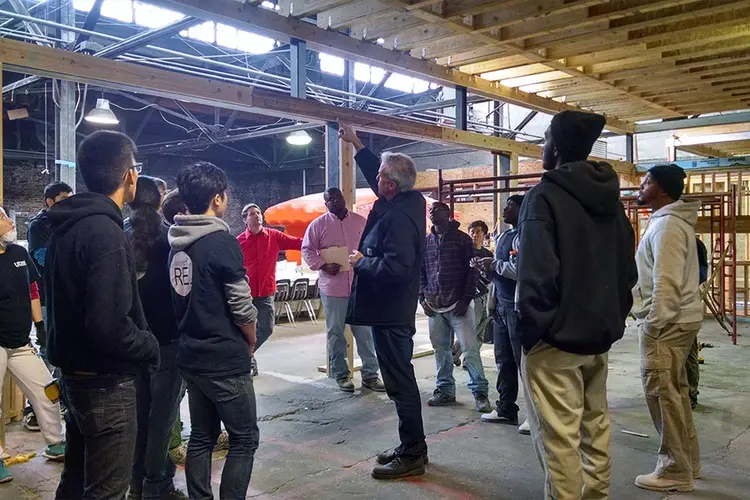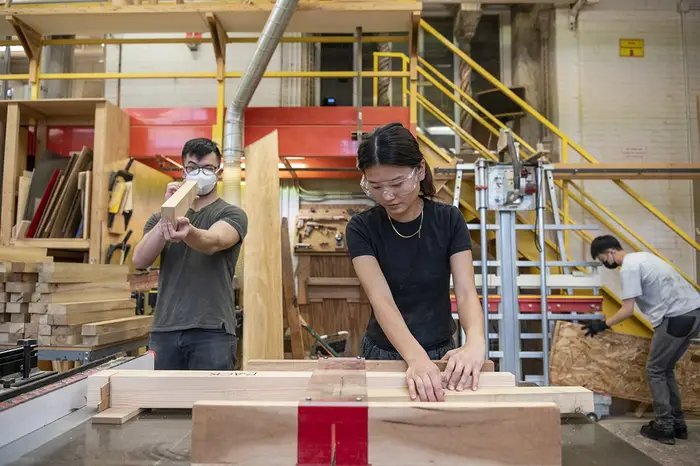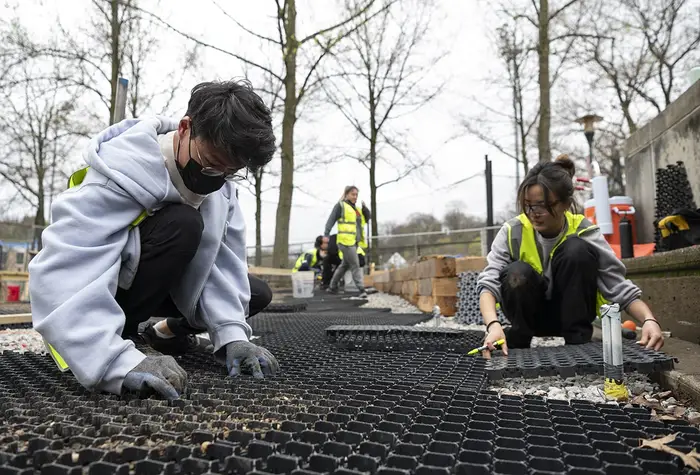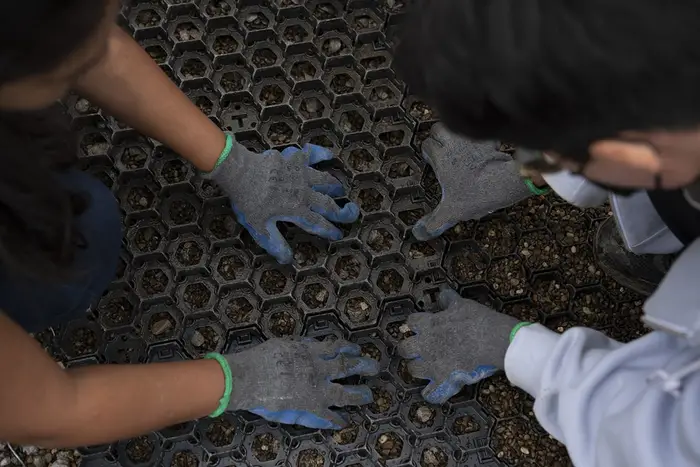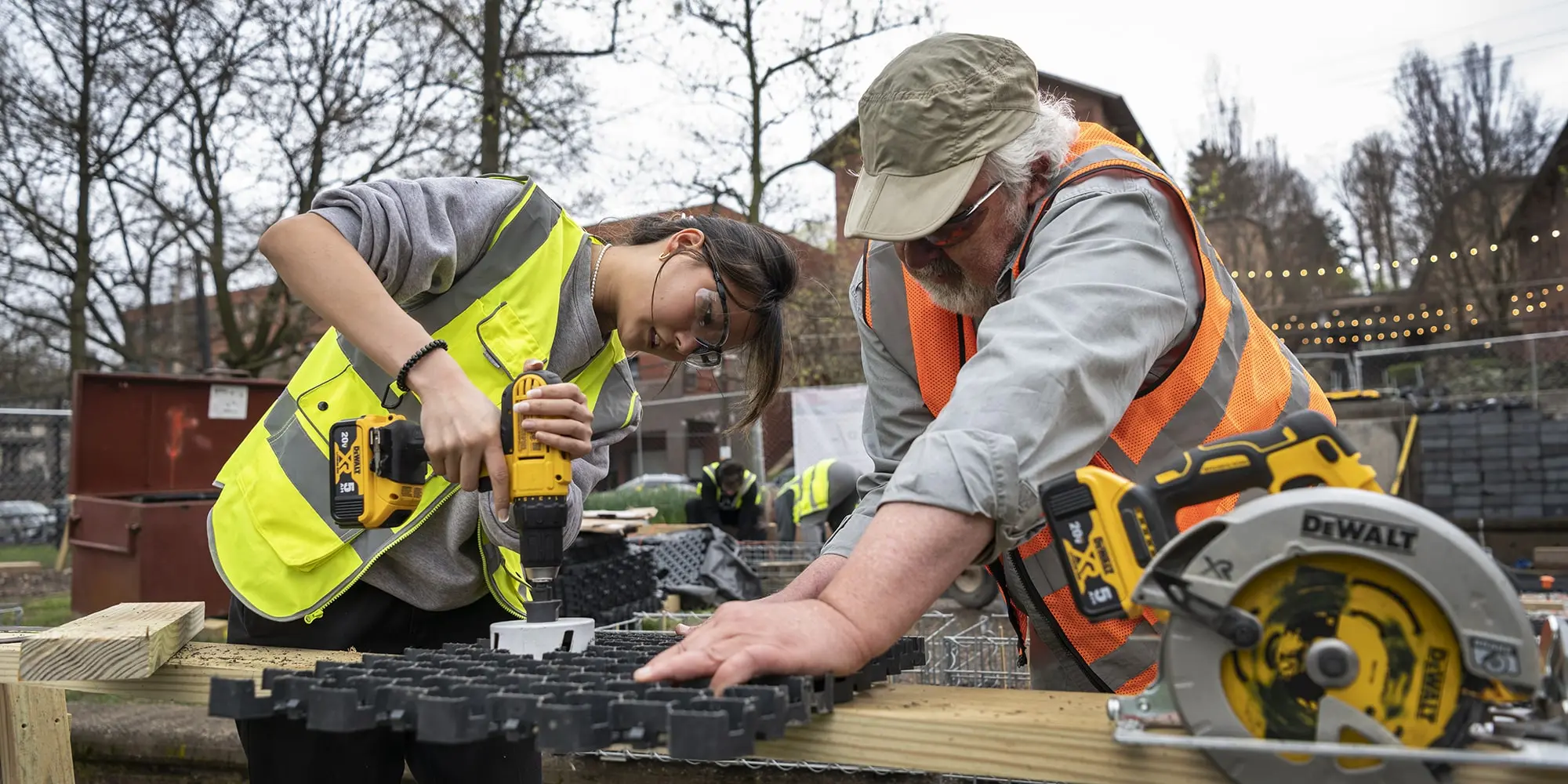
The Cut, Beach and Beyond
School of Architecture puts interdisciplinary students to work
Media Inquiries
Professor Steve Lee(opens in new window) oversees a crew of nine students laying down sections of a polypropylene hexagonal grid and filling them with pea gravel. Restricted to passersby by a chain-link fence, this small construction site adjacent to Margaret Morrison Street is the result of a yearlong project for an interdisciplinary set of students who conceived and crafted an outdoor seating area at Carnegie Mellon University.
The project, "The Cut, Beach and Beyond," is the culmination of Lee's and Civil and Environmental Engineering Associate Teaching Professor Sarah Christian's(opens in new window) efforts to revive and enhance a semester-long design/build course run by former CMU Professor Larry Cartwright(opens in new window). After 12 years as head of the School of Architecture(opens in new window) (SoA), and taking a sabbatical the following year, Lee is using the three years of a phased retirement to build a sustainable design/build program.
In Lee's model, students from the School of Architecture in the College of Fine Arts(opens in new window) and the Department of Civil and Environmental Engineering(opens in new window) in the College of Engineering(opens in new window) spend a semester designing a campus project and another building it. As Lee supervises the build site, an additional crew works under the guidance of Jon Holmes(opens in new window), SoA SHOP director, to prefabricate the seating components.
Architecture students Max Chen, left, and Joanne Chui cut pieces of wood that will be used for seating at the project site in the SoA SHOP.�
"I've been committed to design/build as a pedagogical strategy for helping architects understand how to make better buildings my entire career," Lee said. "Our students have to translate the forms and spaces they imagined into real details — with brick and steel and concrete and wood — and figure out how to build it, which is atypical for an architecture studio in school."
Once it's finished, Lee said the new seating will serve as a destination for the campus community.
"We need outdoor spaces. We spend so much time in classrooms and studios and the weather in Pittsburgh is so unpredictable," Lee said. "When you have a nice day, it's great to flow outside."
Students work to finish the project before its grand opening Commencement weekend.�
At the core of the project is an effort to locally source materials and prioritize sustainable choices. The nine inches of gravel, for example, is permeable and has enough void space to collect rain during a peak Pittsburgh storm. The team chose to use black locust, a wood native to Pennsylvania and Appalachia, that won't require any maintenance for many years. Retaining walls are filled with leftover bricks from other CMU projects.
One of Lee's students, Kimberlyn Cho, walks over to Lee with a section of the hexagonal grid. The two discuss how best to cut the grid using a circular saw to make it fit correctly into place. Once Lee has given his instructions, he steps back, and lets Cho make the cut.
"The best part is that Professor Lee treats us as professionals," said Cho, who is a fifth-year senior graduating this May with a bachelor's degree in architecture. "This is our first time building one of our designs, but he's always approached us as equals on a job site. It's been a great learning experience."
The new seating area is nearing completion, and a ceremony will mark its unveiling Commencement weekend. Cho's family will get to see more than her graduation.
Steve Wang, left, and�Kimberlyn Cho lay down sections of the grid.
The void space between the gravel allows for rain to collect during storms.
"I've been showing my family photos of the build in-progress, and they're super excited to see it finished," Cho said. "All my other fifth-year friends are excited to show their parents the site, because usually all we have are drawings and plans."
For some students taking the class, the opportunity to leave something behind for the Carnegie Mellon community was a meaningful experience.
"I was really interested by the prompt, both as an architect to build something, and as a CMU student to be able to impact the community," said Steve Wang, a fifth-year senior graduating in May with degrees in architecture and human-computer interaction(opens in new window). "Having the opportunity to actually see how something like this is made helps make all your future designs more convincing."
— Related Content —

Omar Khan Appointed New Head of the Carnegie Mellon School o

Freedom By Design Chapter Helps Warm Pittsburgh's Homes
